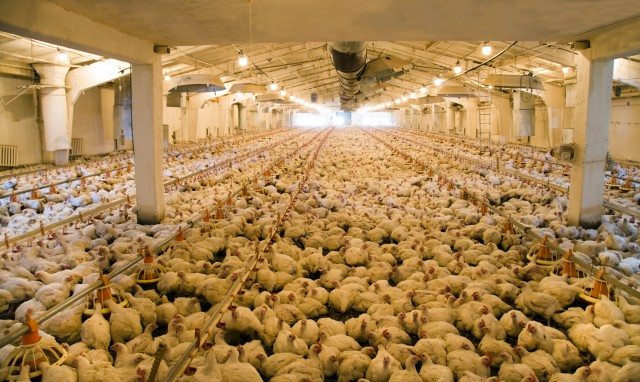Losses in poultry production and related businesses due to avian influenza are estimated at US$309.9 million in Greater Minnesota, according to a newly released emergency economic impact analysis from University of Minnesota Extension.
Using economic modeling, analysts determined that for every million dollars in direct losses, the estimated ripple effect leads to US$1.8 million in overall economic losses, including US$450,000 in wages.
Ripple effect losses stem from factors including reduced wage-earner and business-to-business spending.
The Extension analysis put losses of poultry production–both turkeys and egg-laying chickens at US$113 million as of May 11, 2015.
“These projections represent where we stand as of May 11,” said Brigid Tuck, the senior analyst who led the study. “If the virus affects more farms, as we have seen since May 11, the impact levels will rise. If barns stay empty for another cycle of poultry production, these numbers could potentially double.”
Poultry production and processing is a US$3 billion industry in the state; overall, poultry growers represent about 7% of the agricultural and forestry economy.
The study focuses on the state’s 80 non-metro counties, where nearly all poultry production occurs.
Extent of losses
The industry that produces feed for poultry and other animals will be hardest hit by poultry production losses.
For every US$1 million of lost poultry production, nearly US$230,000 of demand for poultry feed is lost.
For every 100 jobs lost due to reduced poultry processing, nine are in the trucking industry.
Other job losses related to poultry processing are six and seven per 100 jobs, respectively, in wholesale trade and specialized poultry processing.
The idling of 100 poultry processing jobs will result in an estimated 210 jobs being affected across all industries.
Economic losses stemming per 100 poultry processing jobs impacted are estimated at US$44.8 million, including US$9.3 million in labor income.
Researchers noted that insurance and government compensation for producers may help alleviate losses for poultry producers, though the impact on other industries will not be offset.
“We know avian influenza is devastating, emotionally and financially, for growers and those whose businesses are connected to the poultry industry. These early estimates show its impact on farmers, Main Street, the industry and the state,” said economist Kent Olson, associate dean of Extension’s Center for Community Vitality.
“This analysis is an initial look at the short- to immediate-term picture to give decision-makers context. We recommended a more detailed analysis take place once the avian influenza outbreak reaches a conclusion.”
The report represents data occurring up to May 11, 2015.
Projections were calculated based on data including 2014 poultry industry figures.
Jobs include full-time, part-time and seasonal.
Support from the EDA Center at the University of Minnesota Crookston helped fund this report.
Story by Lara Durben from University of Minnesota Extension










